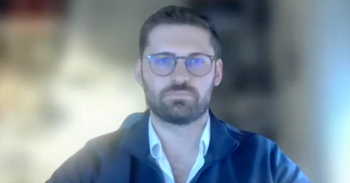
Mary Lou Smith on Ensuring Patients Feel Cared For
One way to make all patients with cancer, regardless of socioeconomic status, feel like they're on the same level when receiving treatment is to ensure they know they're being taken care of, said Mary Lou Smith, MBA, co-founder of the Research Advocacy Network.
One way to make all patients with cancer, regardless of socioeconomic status, feel like they're on the same level when receiving treatment is to ensure they know they're being taken care of, said Mary Lou Smith, MBA, co-founder of the Research Advocacy Network.
Transcript (slightly modified for readability)
What is the challenge presented when you have low-income patients and high-income patients, and how do you help them get on the same level and reduce the care disparities between these 2 groups?
Well I think one of the levelling is that you care for people. The most important thing for me as a patient was when the organization I went to, Mayo Medical Center, and everyone from the receptionist to the person who drew the blood to the surgeon said, "Mary Lou, we're here to take care of you." Didn't cost a thing, but it made me feel level: I'm being taken care of with everybody else.
And I think that's part of it: to give true care, to have a coordination of care so you aren't dumped. If you think it's hard for someone with a master's degree to figure out how to get all the pieces of the puzzle together, just imagine somebody who this whole idea is foreign to them. And for most of us, we didn't study cancer, so when we're diagnosed, we're pretty much nephytes, and we've got the glassy eyes going. So all the help anyone can give us is greatly appreciated.
And that's part of what we try to do at Research Advocacy Network, is we try and get patient education materials that are kind of a "just in time" piece of material. They're made for the perosn who is just new to this particular experience and then we test that material with that patient population to find out: is this what you needed to know, are you getting the information you need so you can make a decision? Because in the end, it is the patient's decision.
Newsletter
Stay ahead of policy, cost, and value—subscribe to AJMC for expert insights at the intersection of clinical care and health economics.













































